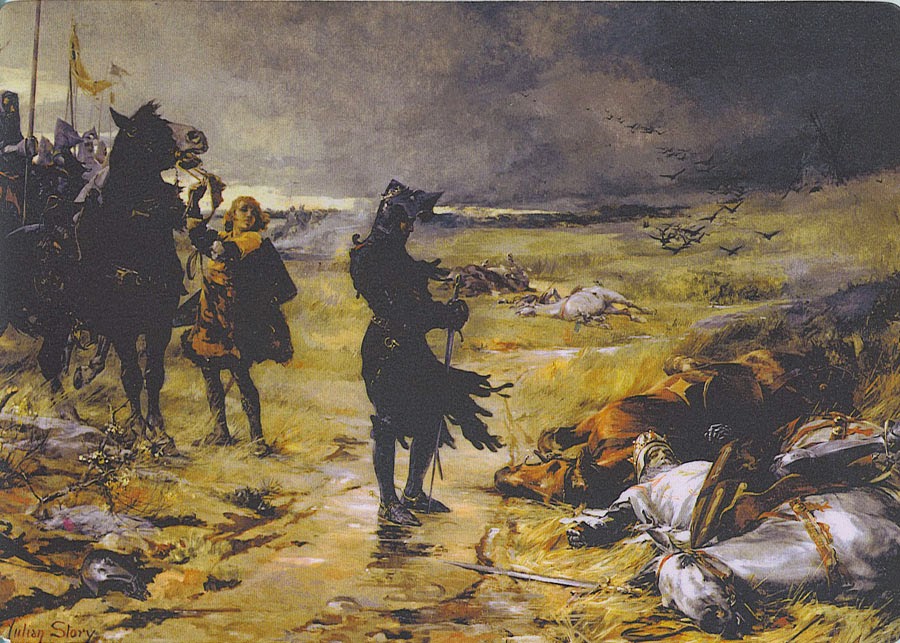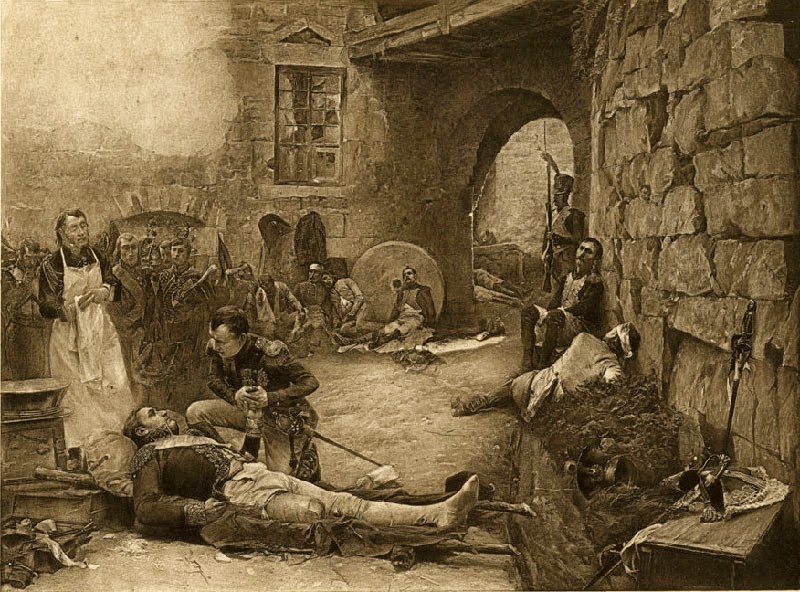Black Prince at the battle of Crecy by the British painter Julian Russell Story (1857-1919). After the battle the victorious English prince is contemplating the body of the dead King John of Bohemia. It should be mentioned that Edward Prince of Wales the eldest son of King Edward III of England was never called “Black” in his lifetime. It's an attribution of the 16th century. But anyway he looks nice so deadly black with the crows in the back.
↧
Romantic Death
↧
Prehistoric Sweethearts
↧
↧
Defeated Enemies
↧
Heroic Waterloo
↧
Kind of Harem Painting
↧
↧
Romantic Knight
↧
Ever-Present Peril
↧
Famous English Nude
Lady_Godiva by the French painter Jules Joseph Lefebvre (1836–1911). As legend tells Lady Godiva was a 11th century English princess married to Leofric, the Earl of Mercia and lord of Coventry. She begged her husband to relieve the townspeople of the oppressive taxes and tolls. He refused, unless she agree to ride through the town naked on horseback. Out of respect for their lady, it is said, the townspeople stayed indoors during her ride.
↧
Tragic Love
↧
↧
Viking Queen
↧
Harem Guard
↧
Idyllic Court Scene
↧
Historical Moment
↧
↧
A Wounded Hero
↧
Founding of a Nation
↧
Kind of Fairy Tale
↧
Vae Victis
An illustration by the French artist Paul Lehugeur (1854-1932?) for “Histoire de France en cent tableaux”, Paris, 1886. There is the Gaul chieftain Brennus weighing the Roman ransom money in 387 BC. According to Livy, during a dispute over the weights used to measure the gold, Brennus threw his sword onto the scales and uttered the famous words "Vae victis!", which translates to "woe to the conquered!"
↧
↧
Decadent Rome
↧
Advertising with History
↧
Good old Times
↧






---the-sword-of-damocles,-1812.jpg)

---Semiramis-dying-on-Nino%E2%80%99s-grave.jpg)











